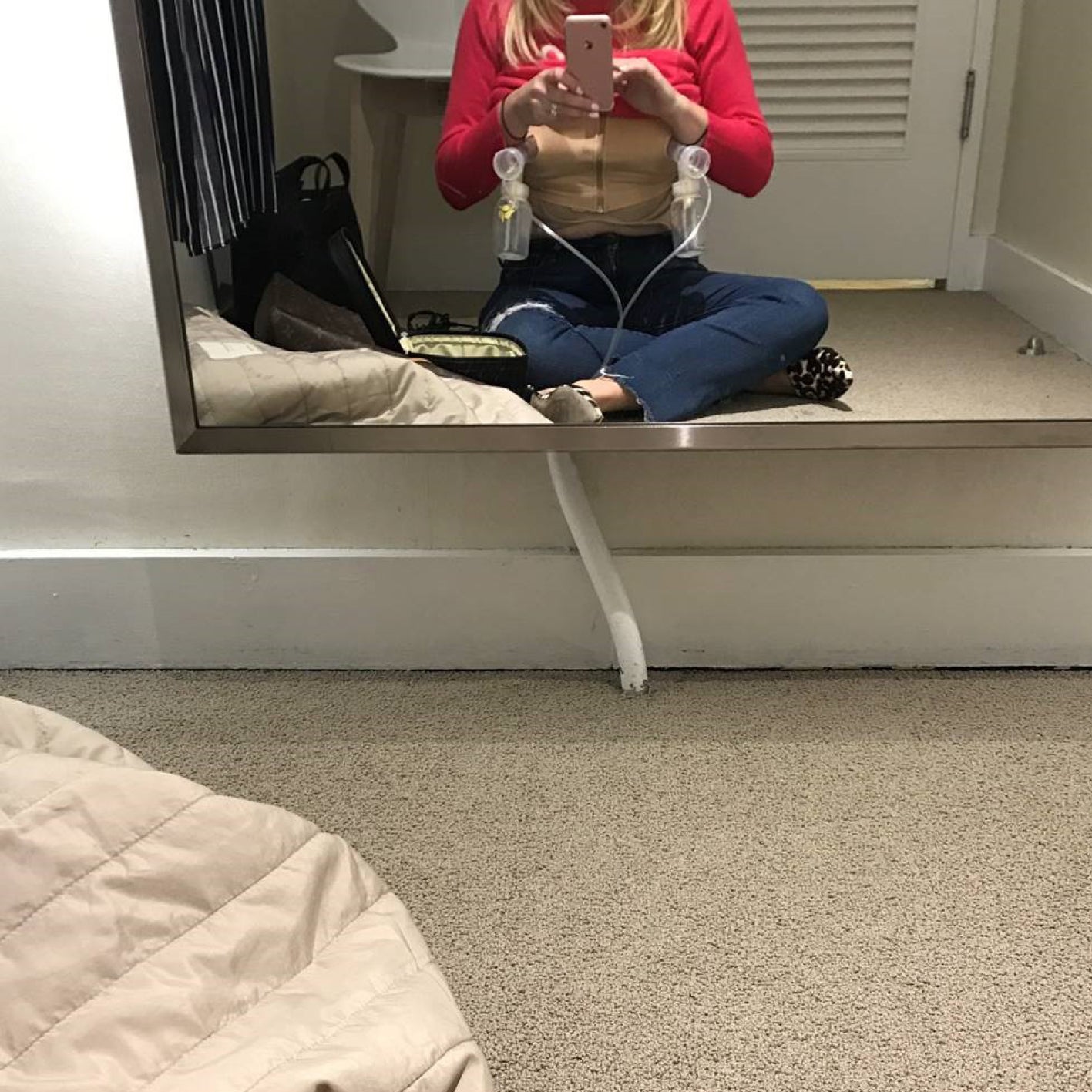
Many expectant and new mothers find that breastfeeding and breast pumping can be overwhelming. We know this first hand as our team of International Board Certified Lactation Consultants (IBCLC’s) at The Pump Station & Nurtury helps hundreds of new moms every month with these concerns. Probably the most common question we get from moms is, “How do I choose a pump and when should I start pumping?” With over 33 years of supporting breastfeeding and breast pumping moms, we’ve seen and heard a lot, and we’re happy to share some insight.
What are the different types of pumps, and which is “best”?
- Hand/Manual & Silicone Bulb Pumps – We recommend purchasing one of each as moms love them. They are inexpensive, portable and convenient.
- Single user double electric pumps – We recommend these as your primary pump. These are often called “insurance” or “over-the-counter” pumps you can buy at retail. Be cautious when selecting insurance pumps as quality varies widely. We absolutely love the new Medela Freestyle Flex!
- New to the market in the last few years are the wearable, wireless pumps. We don’t tend to recommend these very highly since the moms we work with have given us mixed feedback. On one hand, they are discreet, so you may be able to pump when you otherwise couldn’t. Unfortunately, they can be uncomfortable, cumbersome to use, and expensive. We also hear that some moms aren’t able to extract as much milk.
- A clinical/hospital grade pump is the best pump for getting your milk supply started and then building and maintaining it. These pumps, since they are used in a hospital setting across many patients (with new kits for each patient of course), are built to last and are sturdier, smoother to operate, and they do a much better job simulating how a baby nurses. They are also more comfortable to use. When a mother has multiples, a baby who is hospitalized, or is just trying to improve her supply, we recommend these types of pumps. It is also suggested as a treatment for common issues such as mastitis or plugged ducts. They are available to rent in most markets.
When is the best time to start pumping?
Before we start talking about when to start pumping, let’s talk about the how it all works. The most important part of establishing a strong milk supply is frequent stimulation of the breast combined with effective milk removal. It becomes self-reinforcing: the more frequently we nurse or pump (within reason), the better the milk supply. Hormones also play a huge role in all of this. Two of the most important hormones, and there a lot of them, are prolactin and oxytocin. Prolactin controls how much breast milk is produced. Oxytocin causes the milk to be ejected into the milk ducts and out to the baby’s mouth in the nipple area, commonly known as the “milk let down.” This hormone is also associated with bonding and “feeling good,” and both of these hormones are released into the blood stream during nursing or pumping.
When a mother should start pumping depends on many factors, including the status of the milk supply, how breastfeeding is going for both mom and baby, the age of the infant and on the goals each mother has set for herself. It becomes easier as the mother gets used to it, and plenty of help is available for mothers who are struggling.
Different stages to consider pumping:
-
First two weeks of life:
- If you’re attempting to increase your supply of milk
- If you’re separated from your baby, such as when your baby is born early and needs to stay in the NICU for a period of time.
- If you’re struggling with latch, or you are otherwise unable to nurse at the breast
- If your baby has lost too much weight, doesn’t appear to be nursing well, or isn’t making enough soiled or wet diapers
- If you’re supplementing nursing, such as with your own breast milk, donor milk, or with formula
- Remember to get help – plenty of help is available, either through the hospital or an ICBLC
-
After you’ve created a successful routine
- You’re going back to work or you want to build up a reserve of extra milk. To do this, you could pump about a half hour after you’ve nursed.
- You want to protect your supply, even if you’re pumping to bottle feed, pump when the baby is fed the bottle, even if it’s at night, so you can continue the regular production of milk.
-
You’re returning to work or will be separated from baby for longer periods of time.
- Try to pump every three hours, at roughly the same times you would normally be feeding.
- One trick is to use a hands-free pumping bra or an in-bra pump on the way to work to use the time more effectively, but make sure to pay attention to the road.
- If you can, nurse on the days you spend with your baby.
- The Pump Station & Nurtury offers a Breastfeeding and Returning to Work class that can help you manage the transition
- As we mentioned earlier, pumping can be recommended as a treatment for a plugged duct or mastitis
- Sometimes, mothers experience too much discomfort breastfeeding, and they may choose to pump exclusively.
We know that choosing a pump and pumping can be challenging. We encourage you to reach out to pumping friends, attend a breastfeeding support group and a breastfeeding class before birth, book a prenatal visit with an IBCLC, or give us a call.





